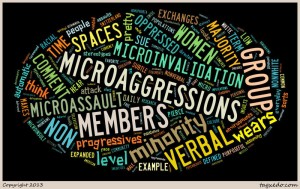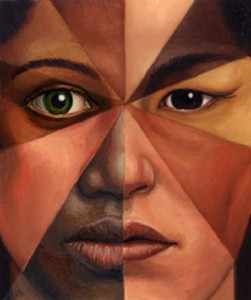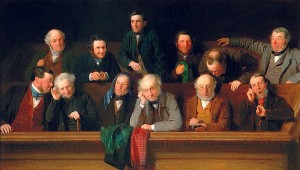 Social Class Biculturalism and Cultural Frame Switching
Social Class Biculturalism and Cultural Frame Switching
Laura Brady
Laura’s dissertation work examines whether first-generation college students (i.e., students whose parents have not completed four-year Bachelor’s degrees) engage in cultural frame switching along the lines of social class. First-generation college students tend to come from working class backgrounds where interdependence is the normative way of being. When these students enter college, however, they find themselves surrounded by predominantly middle class people and in institutions that promote an independent way of being. Her dissertation work examines whether, as a function of attending college, first-generation college students internalize the middle class independent way of being, eventually becoming bicultural along the lines of social class. In particular, the research focuses on the possibility that, having internalized two social class cultural ways of being, first-generation college students engage in cultural frame switching, allowing the social class context to guide their thoughts, attitudes, and behaviors to align with the social class cultural context (e.g., working class interdependence or middle class independence).
 Exploring Social Class Microaggressions
Exploring Social Class Microaggressions
Laura Brady and Karen Chang
Research in social psychology, education, and sociology all suggests that first-generation college students face many social, psychological, and academic challenges during college. Within psychology, much of the research on social class has focused on the role of cultural norms – specifically a mismatch of cultural norms – in producing academic disparities between first- and continuing-generation college students. This collaborative project expands on previous research by asking whether first-generation college students might also experience social class microaggressions in college settings. Furthermore, Laura and Karen are interested in understanding the extent to which these experiences of subtle discrimination contribute to the social, psychological, and academic struggles first-generation students often experience. In the initial phase of this project, they have been working to identify situations in which first-generation college students commonly report feeling subtly discriminated against or devalued, and situations in which these students are made to feel that they don’t belong in college.
 Bicultural Conflict
Bicultural Conflict
Karen Chang
Currently, at least 1 in 4 of all U.S. young adults can be considered bicultural (Batalova & Fix, 2011). While being fluent in multiple cultures has many social and psychological benefits, there are some situations in which the two cultural worlds may collide, and a choice has to be made between the two. For instance, when choosing a career path, should one choose a career based on personal interest and what is personally fulfilling? Or should one choose a career based on financial security for the family to be able to provide for them in old age? In this line of research we examine the psychological experience of having to choose between two cultural values, and the internal struggle biculturals face when making certain key life decisions. Understanding these experiences may aid in understanding reports of greater psychological distress among the U.S.-born children of immigrants.
 The Many Components That Make Up Diversity Ideologies
The Many Components That Make Up Diversity Ideologies
Karen Chang
The literature on diversity ideologies is messy and inconsistent. Sometimes the color blind concept can be good and used to advocate for racial equality, but other times it is bad and used to ignore current inequality. Sometimes multiculturalism is positively correlated with color blindness, and sometimes it is negatively correlated with it. In this line of work, we propose that these inconsistencies exist because these findings are actually tapping into different things. Rather than just falling into two simple definitions, ideas about how we should approach race actually involve a complex system of beliefs that lead to meaningful differences within what has traditionally been considered single ideologies. We test for these different networks of beliefs and the different consequences for various configurations. By breaking these ideologies down into their various components, our goal is to find a combination that works better for all.
 Gender and Racial Double Standard of Aging
Gender and Racial Double Standard of Aging
Alicia Shen
In American society, youthfulness is often held in high regard, while old age is often associated with negativity. However, negative age-related attitudes, stereotypes, and discrimination might not be equally applied to older adults of different gender and/or race. In this line of research, Alicia investigates how negative judgments of elderly people change as a function of perceived gender and race. Furthermore, she is interested in the underlying mechanisms behind such discrepancies, as well as individual characteristics that moderate those effects.
 Identifying Individual Characteristics that Predict Race Bias in the Courtroom
Identifying Individual Characteristics that Predict Race Bias in the Courtroom
Alicia Shen
Despite extensive efforts to identify race bias in mock-jury decisions, the direction of such bias remains inconsistent in the literature. In this line of research, Alicia applies the Highly-Repeated Within-Person Design (Whitsett & Shoda, 2014) to identify individual characteristics that predict the direction and magnitude of race bias. Throughout a series of studies, she found that a target with higher social dominance orientation tends to judge White targets as being more trustworthy relative to Black targets, while other participant characteristics such as race, gender, internal and external motivation to control prejudice did not. Identifying individual characteristics that are predictive of race bias in the courtroom might help lawyers identify such individuals in the jury selection process.
 Evaluating smoking attitudes in response to different types of anti-smoking messages using a Highly Repeated Within-Person Design
Evaluating smoking attitudes in response to different types of anti-smoking messages using a Highly Repeated Within-Person Design
Vasundhara Sridharan
Counter-marketing of tobacco use is an important component of preventing tobacco initiation and encouraging quitting among current smokers, and has contributed to overall reduction of smoking prevalence. However, further reduction in smoking may require tailoring anti-smoking health messages for individuals and those groups among which smoking prevalence remains high in order to reduce tobacco related health disparities. This research tests a novel technique (HRWP) to explore individual differences in people’s responses to various types of anti-smoking messages by identifying the “active ingredients” of messages (those salient features of messages that are central to attitude change), and assessing which types of messages are effective in changing attitudes for each individual. This study demonstrates an innovative method that can be used for tailoring effective anti-smoking messages for individuals who are both smokers and nonsmokers.